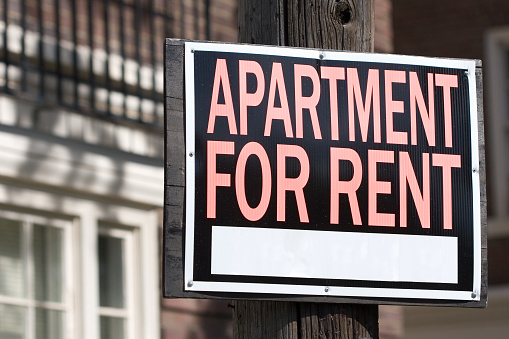Process of warranty claim and what to expect?
Process of warranty claim and what to expect? Everything about your new house would be wonderful if you could just move in. It’s possible that you’ll discover anything that needs fixing, finishing, or installing after your builder has left. However it is important to ensure that builders meet minimal customer service requirements when addressing warranty repairs or issues with newly constructed homes. Submission of a Warranty Claim Submitting a warranty form initiates the warranty claim procedure. To ensure timely processing of your warranty claim, please submit all required paperwork after closing on your new home. When you file a warranty claim, Tarion and the builder are made aware of your concerns, and Tarion can step in to mediate any disputes about the guarantee, if necessary. Be as detailed as possible when describing the type and location of the issue on the warranty form. Photos, movies, and other visual evidence might be helpful as well. How and when to fill out a warranty form? If you have a warranty claim, please fill out one of these forms and submit it to Tarion: 30-Day Form: A 30-Day Form must be submitted within the first 30 days of ownership. Fill out this form to inform your builder of any issues that have emerged since you took possession of your house that were not addressed during your pre-delivery inspection. If you want to report multiple issues under warranty, please submit separate 30-Day Forms for each. Year-End Form: A Year-End Form must be submitted during the final 30 days of the first year of ownership. Please use this form to document any current warranty issues. Remember that the one-year guarantee is the most thorough, and that this is your last chance to notify Tarion of problems with things that fall under that warranty. You may lose warranty coverage for some purchases if you miss the deadline for submitting your Year-End Form. There is only one Year-End Form that will be approved. Second-Year Form: Anytime during the second year of ownership is acceptable to file a Second-Year Form. This form should be used to document any defects that fall under the two-year guarantee. In this window, you may submit as many Second-Year Forms as you feel is necessary. Major Structural Defect Form: Anytime after the second year of possession and before the seventh year from the date of possession is acceptable for filing a Major Structural Defect Form. Please fill out this form to report any severe structural defects that fall under the seven-year warranty. It is acceptable to submit several Major Structural Defect Reports. Once a warranty form is submitted, what happens? If you submit your warranty form within the allotted time frame, your builder has 120 days to address any covered issues. You have 30 days from the conclusion of the original repair period to contact Tarion and request a conciliation if your builder hasn’t repaired or otherwise resolved warranted items. This is true regardless of which warranty form you’ve filled out and submitted (30-day, Year-End, 2-year, or Major Structural Defect). After receiving your warranty form, Tarion will evaluate any disputed or missing items and let you know if they are covered or not through the conciliation procedure. Conciliation usually entails an unbiased representative from Tarion coming to your home to conduct an inspection. When a conciliation is requested, the builder is given an additional 30 days to address the issues listed on the warranty form. Your builder will need access to your home during the designated repair periods, during which you are responsible for granting them access to make any repairs and working with them to resolve any issues that may arise. There is a deadline for requesting a conciliation, after which the elements on your form will be removed and Tarion will no longer be able to help you. The Mediation Process for Warranty Claims Tarion will conduct the conciliation to determine if the items on your form are covered by the warranty. This happens if the builder does not settle them within 30 days of your conciliation request. The Tarion inspector will also review the paperwork you and the builder submit after the home inspection. Following the conciliation, Tarion will provide you and your builder with a written report detailing their findings. If Tarion determines a problem exists with a warranted item, the builder has 30 days to address the issue. Related posts 26 January 2023 Process of warranty claim and what to expect? 25 January 2023 Home Snow Removal? Remember These Spots Home Snow Removal? Remember These Spots One constant of an Ontario winter is snow. Sometimes quite a… 23 January 2023 Lower Bond Yields Mean Lower Fixed Mortgage Rates Lower Bond Yields Mean Lower Fixed Mortgage Rates Mortgage debtors may finally see some relief after… 21 January 2023 Denied mortgage renewal: What happens next? Denied Mortgage Renewal:What happens next? If you want to keep paying down your mortgage after the current… 19 January 2023 Canada’s Bank Regulator Wants Tighter Real Estate Risk Rules Canada’s Bank Regulator Wants Tighter Real Estate Risk Rules More stringent rules on mortgage borrowing… 16 January 2023 Reasons a robust labour market could affect your mortgage interest rate Reasons a robust labour market could affect your mortgage interest rate Over the past year, Canada’s… 13 January 2023 Is it necessary to pay Toronto’s new vacant home tax? Is it necessary to pay Toronto’s new vacant home tax? The new Vacant Home Tax in the City of Toronto…
Process of warranty claim and what to expect? Read More »













